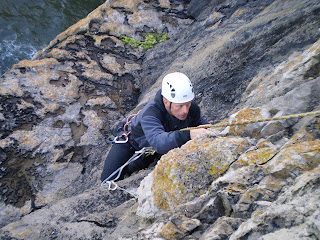Adventure – what’s it worth?
As an engineer I deal with the precise; everything can be explained logically and measured scientifically. As an outdoor adventure leader I deal in less tangible issues; get out in the hills it will make a man of you!
The latter view is common amongst the outdoor community and I know from managing people before and after a period of adventurous activity that they are invariably enhanced by the intervention. I’ve seen improvements in self confidence, appreciation of the team, communication, and determination, and have used this “fluffy” argument often when fighting for resources to deliver Adventurous Training in the Royal Navy. However, all the time that little engineer in his overalls at the back of my mind says “prove it”, supporting Neill (2003) who argues for empirical evidence to better assess the effectiveness of a particular programme. Neill (2011) lists some 26 methods of analyzing the effect of interventions or training programmes on either the individual or the group, and there are many more including subjective and objective combination measures notably in medicine (Harcourt et al, 2003) and sport. However, few are designed specifically for adventurous activities and some aren’t even optimised so is it worth the effort?
When I’m selling expeditions in schools I offer a life changing opportunity for personal development but can’t really offer a cost-benefit analysis. Hahn said
I know few boys who do not draw strength, and retrospectively also joy, from an arduous expedition carried out to a definite goal (1959, p.6).
I think I need a bit more hard evidence to convince parents who are spending in excess of £3000 that their money will be well spent.
Bibliography:
Hahn, K (1959) ‘Dr. Kurt Hahn at the Forty-Eighth Annual Dinner of Old Centralians’, The Central: The Journal of Old Centralians, No. 119, pp. 3-8.
Harcourt, B.T., Wijesinha, M. & Harcourt, G.E. (2003) ‘Subjective and Objective Numerical Outcome Measure Assessment (SONOMA). A combined outcome measure tool: findings on a study of reliability’, Journal of Manipulative and Physiological Therapy, vol. 26, issue 8, pp. 481-492.
Neill, J. (2011) Summaries of Instruments [online] available from: http://wilderdom.com/tools/ToolsSummaries.html [accessed 7/11/11].
Neill, J. T. (2003) ‘Reviewing and benchmarking adventure therapy outcomes: Applications of meta-analysis’, Journal of Experiential Education, vol. 25, issue 3, pp. 316-321.
Neill, J. T., Marsh, H. W., & Richards, G. E. (2001). The Life Effectiveness Questionnaire: Development and psychometrics. Sydney: University of Western Sydney.



